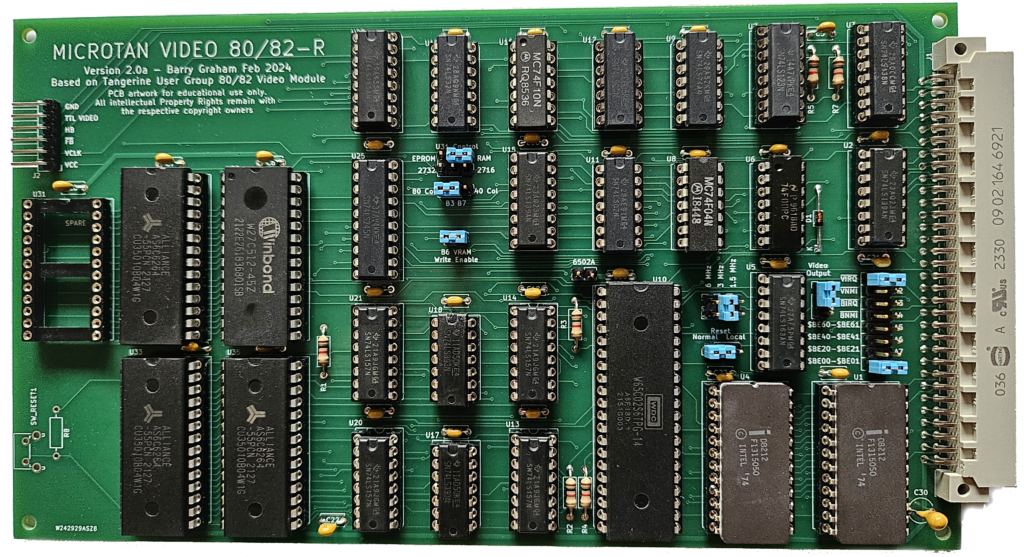
The 32 x 16 character display of the Microtan has always been a limitation. That last sentence is 74 characters long so takes more than 2 lines of the display!
In 1981 to address this problem the Tangerine Users Group (TUG) developed the 80/82 card. This provided 80 columns x 25 lines of text, much more aligned with micros targeted at professional users like the Commodore PET and the output of minicomputer terminals like the VT52. The 80/82 also has the capability for 512 x 256 monochrome graphics.
The board is unusual for its time in that it has its own CPU, another 6502, a solution that has two key advantages. Firstly the 16K required for the video RAM does not have to come out of the 64K address space of the main Microtan CPU, and secondly, the graphics processing required for tasks such as drawing an arc can be offloaded to this CPU.
Unlike the Microtan video, the board does not have a hardware character generator, all the fonts are soft bitmap fonts and the 80/82 CPU has to write multiple bytes to video memory for each character. This has the disadvantage of slowing the display down somewhat, and scrolling in particular is relatively slow as the CPU has to copy the entire 16K block of memory to scroll each line. This is slightly offset by the CPU running at 1.5MHz, double the speed of the Microtan 6502. Like the Microtan the video circuits access the RAM during the half of the 6502 cycle when the CPU does not access it. You can learn more about the board and TUG at http://www.microtan.ukpc.net/
I had two reasons for wanting an 80 / 82 board. Firstly I am rather fond of some of the old text-based basic games. My first memory of a computer game comes from playing Hamurabi on a VT100 connected to a PDP11/45. There is a famous book, 101 Basic Games, dating from the mid-70s with many like this, and most of them just do not work on a 32 x 16 display. Secondly, when I was working with FORTH-R I found the screen so limiting I ended up working more with a terminal emulator, which felt a bit like cheating!
In the spirit of the other Microtan-R projects I set out to recreate the original board making any updates required to avoid component obselence issues and to include the most common modifications and fixes published at the time. The biggest change was to move from 9 x 6116 Memory chips to 3 x 6264 devices. The 6264 device was available in the early 80s, and is much easier (and cheaper) to source now so I feel this is a historically legitimate substitution as well as making it easier to build these boards now, and for a few years to come.
The original designers of the board clearly faced some challenges squeezing everything onto a single Microtan sized PCB and the address decode has some odd gate combinations in order to keep the number of devices to a minimum. Using very fast memory chips shows up a few timing compromises that would have been perfectly reasonable at the time, but cause a few issues when using current devices. Luckily I have access to a 100MHz Mixed Signal Oscilloscope, a tool that would have been completely out of reach for amateurs in 1981, was cutting edge in the 1990s, and is available for the price of a couple of meals out on eBay today.
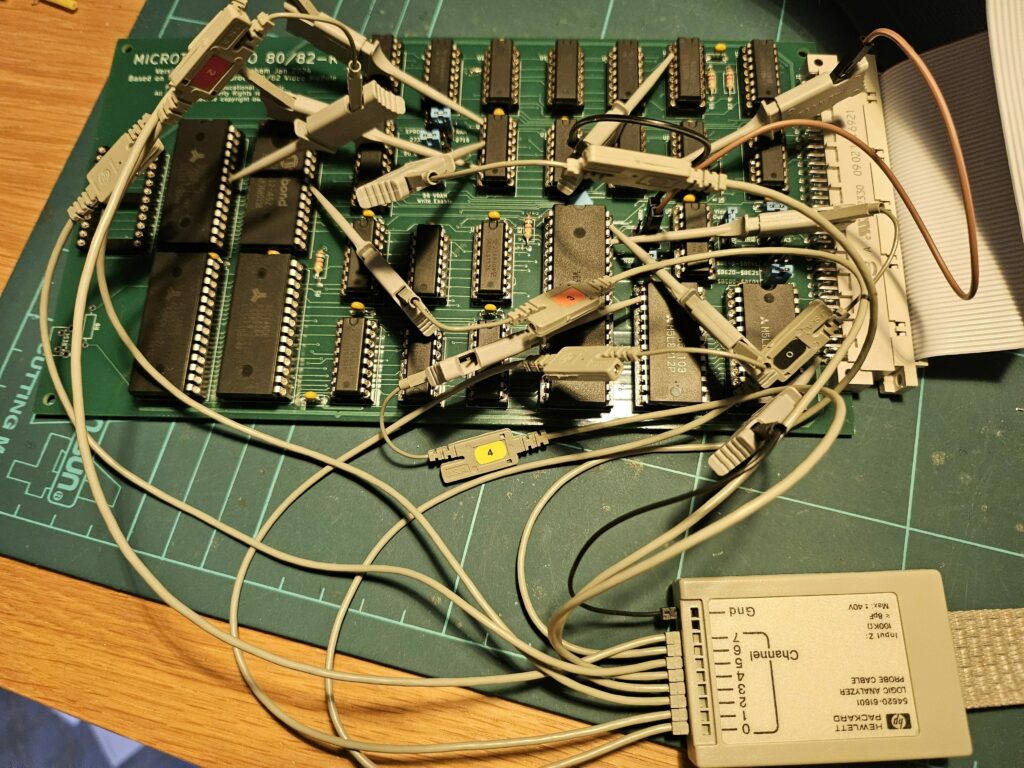
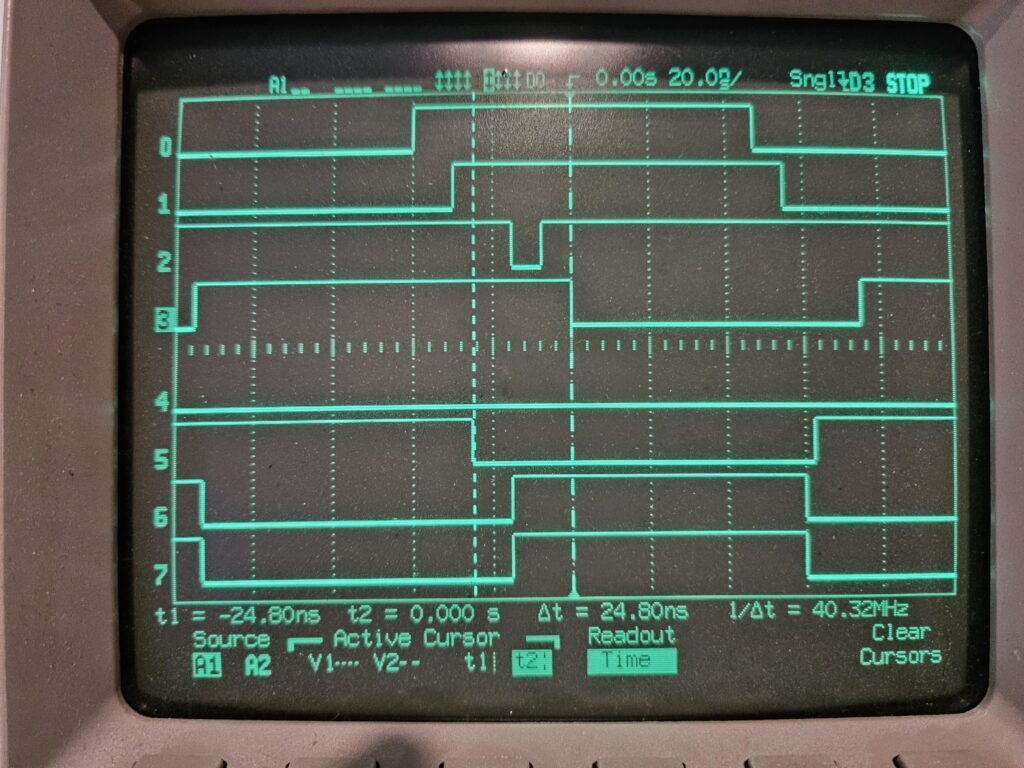
Full details of the changes made are in the manual which can be downloaded from the bottom of this page, but to cut a long story short as well as running at 1.5MHz as the original with a wide range of period and modern devices, and supporting the 3MHz modification published at the time, I managed to make the board run at 6MHz with the right combination of fast modern devices. 3MHz makes the scroll speed feel like working on a 9600 baud terminal, 6MHz is of course faster again.
The board works with all of the firmware and software published at http://www.microtan.ukpc.net/ and I am in the process of completing some drivers for FORTH-R.
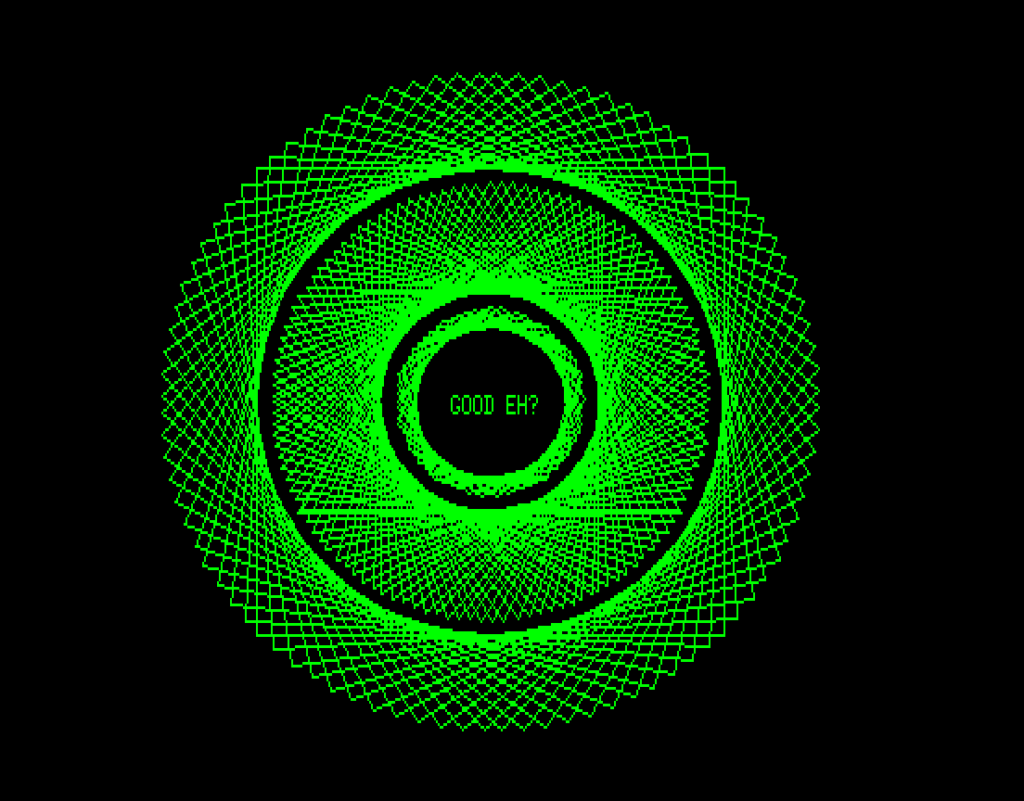
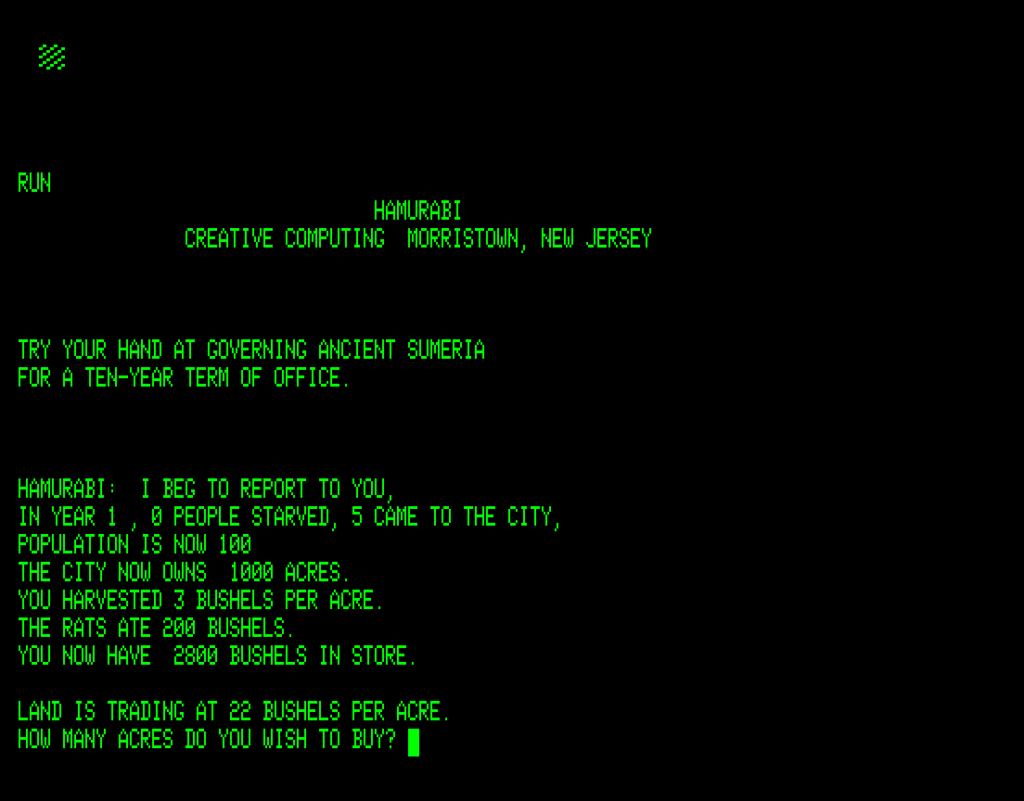
I have some spare PCBs and I am happy to sell them for £20 including UK postage and packing which is what they cost me to have manufactured. If there is enough demand I will get some more made. I can program EPROMs if anyone needs them. I’m also happy to share the KiCAD design files, just drop me an email for any of the above at microtan@thegrahamfamily.me.uk. The Schematic and User Manual, which includes my design notes, are available below.